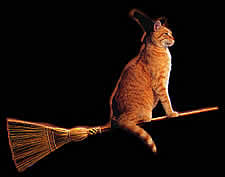Ok, I don't have time or motivation to write a post. I had a very upsetting day and don't have it in me to write a proper post so here's my history project, I hope you like learning about the chinese miners! ^.^ (Just so I don't get in trouble, DO NOT COPY THIS WORK FOR ANY ASSESSMENTS!!!) DFTBA! :)
The Chinese Gold Miners in New Zealand
Why were the Chinese invited to work in New
Zealand?
Many Chinese miners were working in Australia after gold was
discovered there in 1851. This led to an influx of immigrants into Australia
and most of these immigrants were Chinese workers seeking to make enough money
to sustain their life style whilst still sending money back to China to sustain
their families back home and provide them with a better lifestyle than would
have been possible form working in China.
There was a great deal of tension between the Australian
miners, the European miners and the Chinese miners. This was primarily due to
the significant cultural differences between them. The Chinese tended to live
in close communities which meant they rarely associated with the European
miners. The Chinese preferred to smoke opium rather than to drink alcohol and
gamble which was what European miners tended to do in their spare time. The
difference in culture resulted in the European miners abusing the Chinese, both
verbally and sometimes even physically. There were some notable violent attacks
and riots such as the 1860-1861 Lambing Flat riots, where protestor’s used
physical violence to push the Chinese out of their settlements. The Australian
government was unable to provide support and protection for the Chinese miners
and this led to the miners resenting working in Australia.
Gold was first discovered in New Zealand in 1861. Once the discovery
was announced in the Otago newspaper, the news of the find spread rapidly
around New Zealand and miners started to flood into the Otago gold fields. This
discovery was a huge boost to the New Zealand economy. However the chamber of
Commerce was aware of the situation in the gold fields in Australia and
realised that ten Chinese immigrants had been the biggest boost to the
Australian gold mining industry and hence a large reason for the increase in
the Australian aconomy.so when after the first few years of gold mining in
Otago, the European miners thought they had exhausted most of the available
gold, the Chamber of Commerce sent a notice to China and Australia inviting
Chinese miners to New Zealand to mine for any remaining gold they could find.
These notices promised protection to the Chinese.
In the late 1800s, early 1900s New Zealand was relatively unknown
and it was thought to be a relatively peaceful and law abiding country with
little violence. This appealed to the Chinese as they saw an opportunity to
mine on a far safer environment than Australia. Shortly after the notice was
issued, the Chinese population rose from almost zero to about 1,200 in Otago
alone.
Most of the Chinese miners in New Zealand lived a similar
lifestyle to those in Australia. They either lived in tight knit communities
with others from the same ethnicity or on their own in a cottage on the edge of
a township. This was because many of the Chinese miners, whether they were from
Australia or directly from China, had left their families back home in China.
Some men brought over one relative but this was usually a male who would be
able to help with the mining work. This resulted in many of the Chinese miners
becoming very lonely which in turn resulted in strong communities forming with
a strong sense of unity and solidarity.
The majority of the miners could not afford to bring their
families over from China as the fare was too high. Only the wealthier families managed
to pay the fare. These families tended to establish shops or other small
businesses, generally specifically tailored to meet the needs of the wider
Chinese community.
The European miners did not mix with the Chinese as they
felt uncomfortable about their lifestyle which was deemed to be “weird” and
foreign. In addition to their secluded lifestyle, the Chinese also mined in a
different way to the Europeans which further differentiated them. The Chinese
tended to re-mine old claims which had been abandoned by the European miners.
The European miners had taken all the “easy” gold which was relatively easily
mined and they left the gold which was harder to extract and therefore less profitable.
The hard working Chinese miners were not afraid to work for this gold and it
provided them with a reasonable income and hence lifestyle, whilst allowing
them to send money home to their families in China. It was unlikely they would
ever become wealthy this way though. The Europeans miners could not understand the
Chinese approach to mining: their aim was to get rich quickly and move on. This
uncommitted type of mining style favoured by the Europeans meant they often
went without food and did not have a very comfortable lifestyle.
Since the Chinese were working previously worked European
claims, conflicts often arose when the Europeans returned to their old claims
to finds that they had lost them to the Chinese. This also created tension
between the two cultures.
What were the New Zealander’s views of the
Chinese?
The European miners strongly resented the Chinese miners as
they felt they stole their claims and were too “exclusive”. These views
prevailed throughout New Zealand and even through the families of the miners themselves.
These views were also enhanced by the fact that many Chinese established farms
and other agricultural businesses. Many New Zealanders felt that the influx of the
Chinese threatened their sovereignty over New Zealand. The New Zealanders could
see the Chinese were willing to work harder than they were for less pay and
this made them more favourable employees to the New Zealanders. The New
Zealanders felt that businesses were more likely to employ the Chinese workers and
this, together with the rise in the number of Chinese businesses, worried the
New Zealanders who felt that they were losing out on securing jobs. The New
Zealanders felt that the jobs should be given firstly to them to maintain
national sovereignty. The Chinese started to become known as “The Yellow
Peril”.
In 1871, the extent of discontent with the Chinese situation
led to the signing of a petition requesting the New Zealand Government either
restrict Chinese entry into New Zealand or deport the Chinese who were not New
Zealand citizens. Whilst the Government was prepared in general to listen to
New Zealanders to prevent violence erupting, the Chamber of Commerce did not
want the Government to amend the legislation. The Chamber had been tracking the
significant rise in the economy and it was no coincidence that the rise
correlated with the arrival of the Chinese. With the Chamber’s strong objection
to any changes being made to the legislation, the Government felt obliged to
retain the status quo to maintain long term economic gains. The rejection of
any amendment further increased tension between the Chinese and the New
Zealanders.
How did this lead to the miners being treated
differently?
With tensions between the Chinese and the Europeans being at
an all-time high, violence was bound to break out. A famous example of this
violence occurred in 1905when an elderly Chinese woman was fatally shot by
activist Lionel Terry in Wellington’s city centre. There were several other
similar incidents around the country. However, the violence and discrimination
was not merely centralised towards individuals but was often directed at a
whole group of Chinese. At this time the town considered to be “the gateway to
the goldfields” was a small town called Lawrence in Otago. Any Chinese who
chose to live there was shunned and excluded. Some shops even refused to sell
goods to any Chinese living in the town. This forced the Chinese to establish
their own township a kilometre away. The Chinese felt secluded and strong
resentment grew among them which in turn led the Chinese community to becoming
wary and unaccepting of the New Zealanders. The two racial groups kept to
themselves and did not inter mixed. This split the mining communities into two
which worried the New Zealand Government which had originally promised to
protect the Chinese mining community. However it was also the Government’s duty
to protect their own citizens. In 1881 the New Zealand Government finally bowed
to pressure from the New Zealanders and in an attempt to appease them and put a
stop to the violence which was escalating, they passed legislation restricting
Chinese entry into New Zealand.

What did the New Government do about the
problem?
The New Zealand Government enacted legislation to restrict
Chinese entry into New Zealand. The main piece of legislation was the Act “To
regulate the Immigration of Chinese. “This came into force in late 1881 and
stated that in order to enter New Zealand a person of Chinese ethnicity had to
pay a poll tax of £10 to the New Zealand government. In addition, ships
carrying Chinese immigrants were only permitted to carry one person of Chinese
ethnicity per 10 tonnes of cargo. This excluded Chinese sailors from remaining
in New Zealand for any length of time. The penalty on a captain who floated the
law was £10
per Chinese person carried in excess of the allowance.
At first this legislation settled tensions between the
Chinese and the New Zealanders. However, it was soon realised that the influx
of Chinese into New Zealand had only decreased in a minor way following ten
introduction of this legislation. This resulted in the New Zealanders becoming
furious with the Government as they felt it was trying to cheat them of jobs
that were rightfully theirs as citizens of New Zealand. This placed pressure on
the Government to raise the level of the poll tax. Once again the Chamber of
Commerce came out against any increase in the tax on the basis that the Chinese
were a positive influence on the New Zealand economy and the more allowed into
New Zealand the better. A rise in the poll tax would deter immigrants.
In the end the Government decided to ignore the Chamber’s
wishes and give in to the New Zealand public in an attempt to prevent violence.
In 1896 the poll tax was increased to £100. Following this huge increase, the
influx of immigrants decreased significantly and the majority of the New
Zealand population felt appeased.
After the significant rise in the poll tax, most of the
tension between the Chinese and the New Zealanders eased. Although the
resentment, exclusion and occasional violence were still apparent, most of the
prejudice had dissipated. During the early 1900s the gold began to run dry in
the Otago fields. By this time, many of the New Zealand miners had left Otago
for the West Coast of the South Island, leaving the Chinese to fully exhaust
the remaining gold fields, especially in the rivers.
After so many years away from home, most Chinese miners were
anxious to return to their families. However a passage on a boat to China was
expensive and beyond the financial means of most miners who in general only made
enough to live on and to send money home. This resulted in most of the miners
remaining in New Zealand. Some established small businesses, some of which are still
operating in Otago today. Most of the miners left these communities which
became abandoned and they built small cottages in remote locations around
Otago.
In the past several decades some of the bodies of the
Chinese miners have been transported back to their homeland and returned to
their families. The remainder are buried in graveyards here in specifically designed
plots.
Many historical gold mining sites remain today and tourists
are able to gain a glimpse into how the Chinese lived and worked. A memorable
site is that of the remains of a cottage which belonged to a Chinese miner,
unable to return to his homeland. This cottage can be seen on the way in to
Macetown in Otago near Arrowtown. The Chinese man who lived there is reported
to have been an opium smoker and the site is known as “Opium Bob’s cottage”. Similar
sites to this can be seen in many other places around Otago. There is a
relatively large settlement in Arrowtown, down by the Arrow River and another
along the Kawarau gorge Road between Queenstown and Cromwell. The derelict
cottages can be entered. They generally consist of a small single room with a
fireplace and a bed. The walls are usually of stone and the floor is bare dirt.
Many historical sites have been restored and set up as
tourist sites. These sites show visitors how Chinese miners lived and worked
and the conditions they endured to make a living and send money home to their
families back in China, who many never saw again after arriving in New Zealand.
Recently the New Zealand government has sought to return
some land to the Chinese and their descendent families. However to date no
returns have been made as no direct descendants have been found.
Helen Clarke, on behalf of the New Zealand government made a
public apology to the Chinese Government for the appalling treatment of the Chinese
immigrants in New Zealand. This apology was made in any attempt to from strong
economic and social ties between the two countries. It has also highlighted the
plight of the Chinese miners to the New Zealand public and has led to
understanding of the suffering endured by the Chinese 100 years ago. The
Chinese immigrants suffered prejudice and racism some of which is still present
today.
New Zealanders today have recognised that New Zealand was
considered a racist country and the Government has, in the past 150 years,
acted in a racist manner. Has this led to a better and more tolerant society in
New Zealand with more acknowledgment of the need to understand and incorporate different
cultures into our society? It may have
paved the way for a more understanding society tolerant of different races. It
may have taught New Zealanders to be more tolerant of other races and the benefit of working together for economic gain.
There are many Chinese in New Zealand today, working and
assisting in the economic prosperity of our country.
It has resulted in a number of tourist attractions which
provide economic return for the country.























 (The Miacis)
(The Miacis) (And the Tomarctus!)
(And the Tomarctus!) (The symbol of
(The symbol of 













